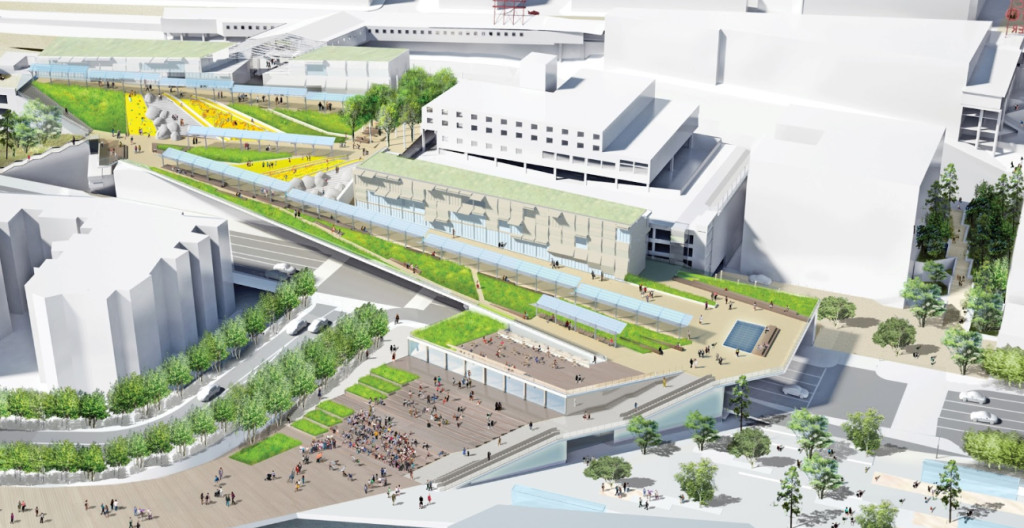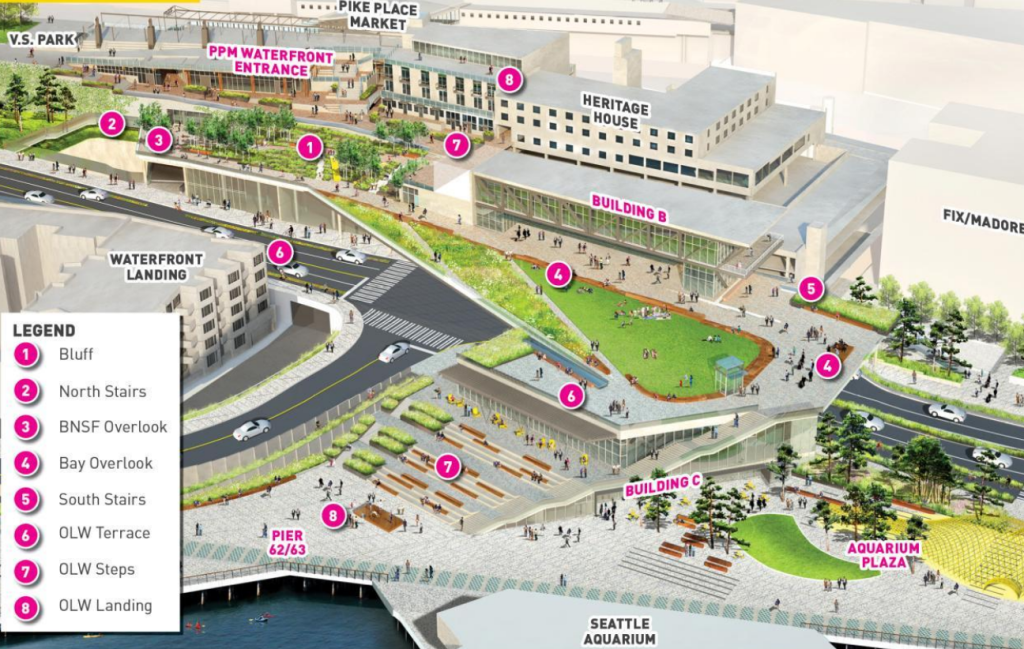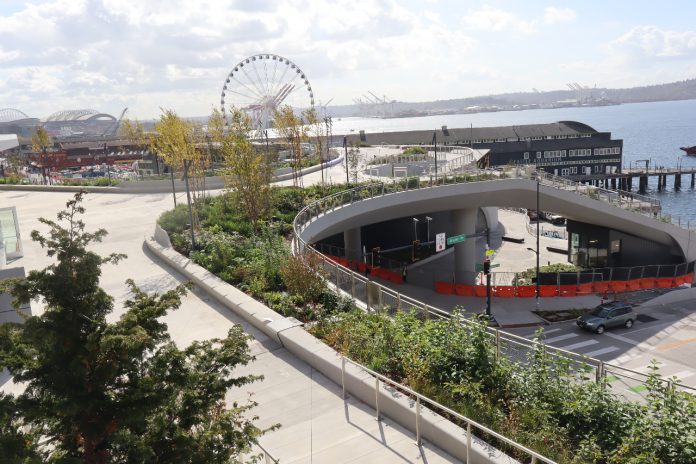
This Friday afternoon, the City of Seattle will officially cut the ribbon on the long-anticipated centerpiece project of the $806 million waterfront revamp — a pedestrian overpass, park space, and gathering venue connecting Pike Place Market with the waterfront over Alaskan Way. One of the last major upgrades planned as part of the 15-year project to decide how to remake the central waterfront after the demolition of the Alaskan Way Viaduct, the Overlook Walk is one of the most ambitious public works projects completed by the City of Seattle in decades.
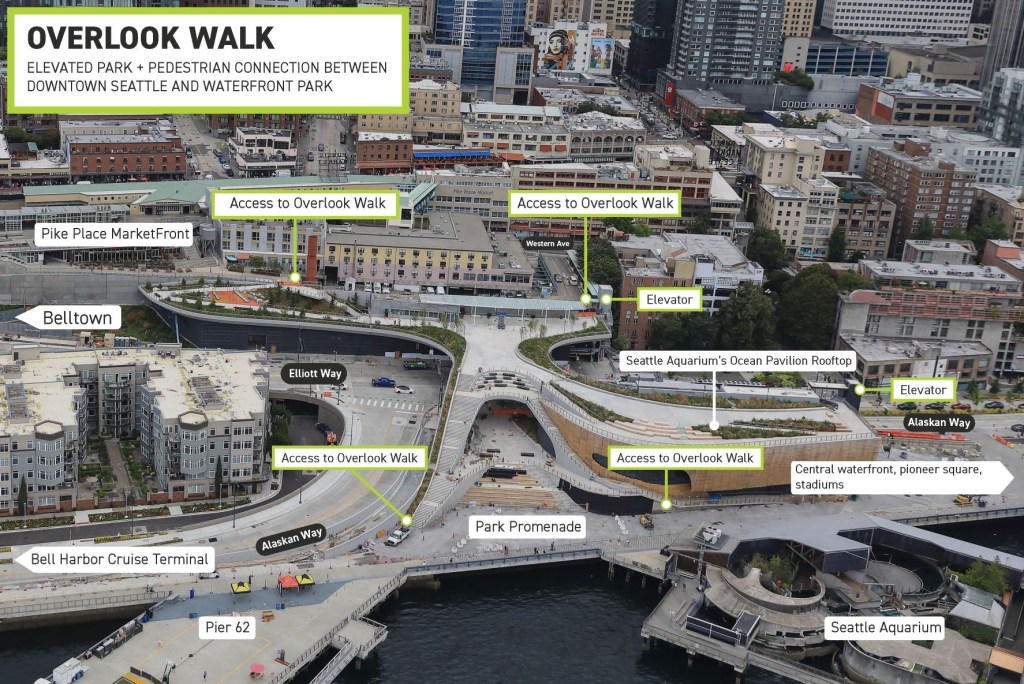
Unlike the new pedestrian connection at Union Street and the revamped overpass connecting to Colman Dock at Marion Street, the Overlook Walk is a park and gathering space first and foremost, and a transportation connection second. The connection is set to close nightly at 10pm, and the pathways aren’t really built to accommodate bicycle traffic.
While the Overlook Walk likely won’t make many people’s trips much faster, it will create the type of intuitive connection between some of the city’s most trafficked areas that simply hasn’t existed before, at least not since the elevated Alaskan Way highway dividing the city opened in 1953.
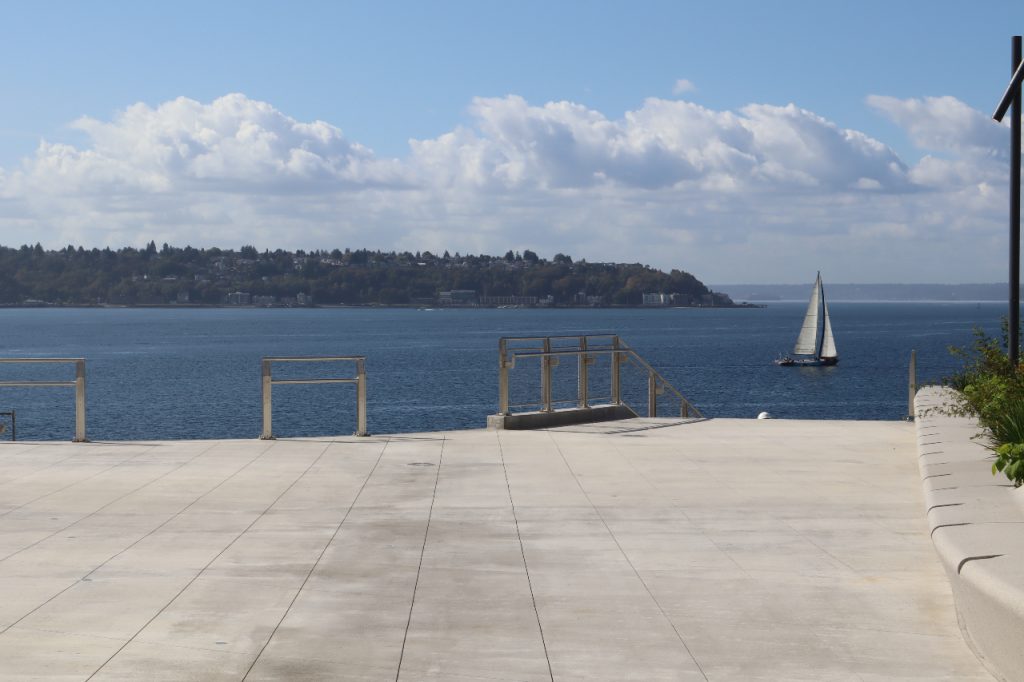
Offering sweeping views of Elliott Bay, the top of the Overlook Walk is sure to become a gathering space for both visitors and locals alike, with lighting inset in the concrete to make it easier to navigate the space during the city’s darkest months. A ring of greenery around the Overlook is intended to create a buffer between people lingering and traffic below on four-lane Elliott Way and Alaskan Way beyond.
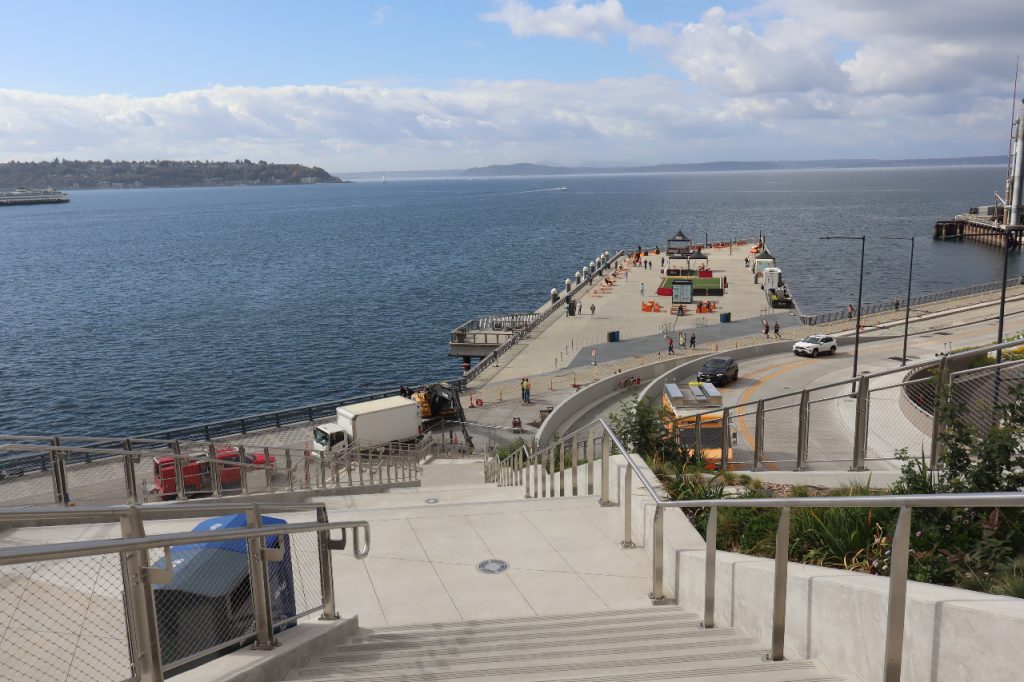
The only covered space on the Overlook Walk is at the top, adjacent to a small building that will become home to a retail shop in the coming months. During a media preview walk this week, Joy Shigaki, President and CEO of Friends of Waterfront Seattle, told The Urbanist that they would be moving forward with selecting that retail vendor early next year.
“We’re looking forward to finding a concessionaire that can provide a really positive experience for everyone coming to the Overlook Walk, a local business to provide food, easy takeaway items,” Shigaki said.
The small building in an unique location could prove challenging for a business to operate in.
“The complexity of being in the space we are, we are building it on a bridge, which makes it really complicated for [a] small business to do the technical improvements of the space,” Shigaki said. In the meantime, Friends of Waterfront Seattle will be providing tables and chairs at what will surely be one of the Walk’s most popular spots.
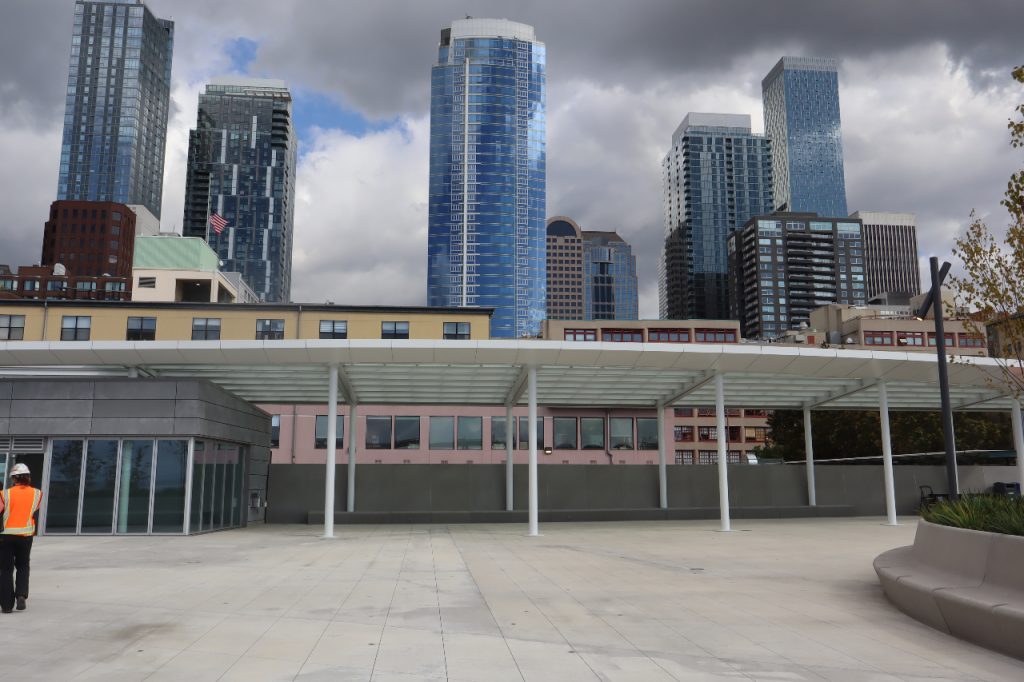
Coming from Pike Place Market, visitors can take stairs directly toward the waterfront or descend using a ramp that winds around a new playground, an area for families to linger. This playground will join a much larger play space being built right now at Pier 58, near the waterfront’s new staffed restrooms that are also under construction.
A third waterfront play space on the Belltown end of the project had originally been envisioned, but ultimately was cut. The land is still owned by the Seattle Department of Transportation and sitting unused, after the idea of using it as an electric vehicle charging lot was scrapped.
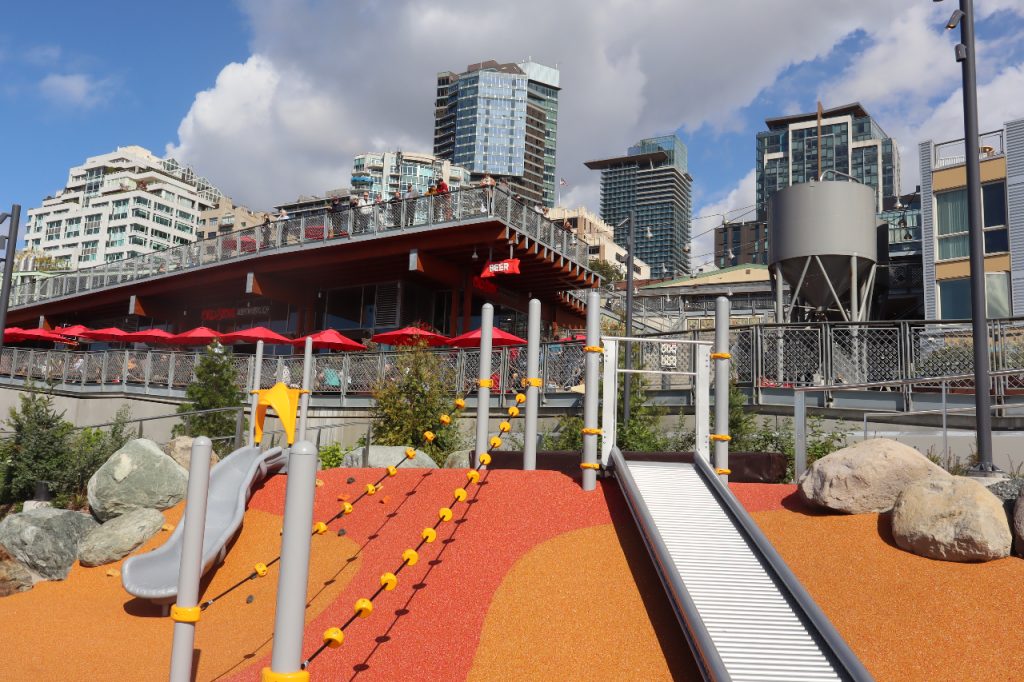
As Overlook walkers descend from the top of the Overlook Walk, the steps turn into stadium-style seating that the City of Seattle is calling the Salish Steps. Here traffic noise is replaced by the din of the mechanical systems for the Seattle Aquarium’s new Ocean Pavilion. The Salish Steps would make for a cozy concert venue, though it’s not clear how often Friends of Waterfront Seattle will be activating the space in that way, with much of their programming to date conducted at nearby Pier 62.
For those looking for an alternative to stairs, a new elevator on top of the Ocean Pavillion will provide access in addition to the existing Pike Place garage accessed via Western Avenue. Keeping that elevator maintained will be key to providing access to the waterfront for everyone, and the travails of keeping the new elevator at Union Street open suggest that could prove a problem for Seattle Center, the city department tasked with managing the entire new waterfront park space.
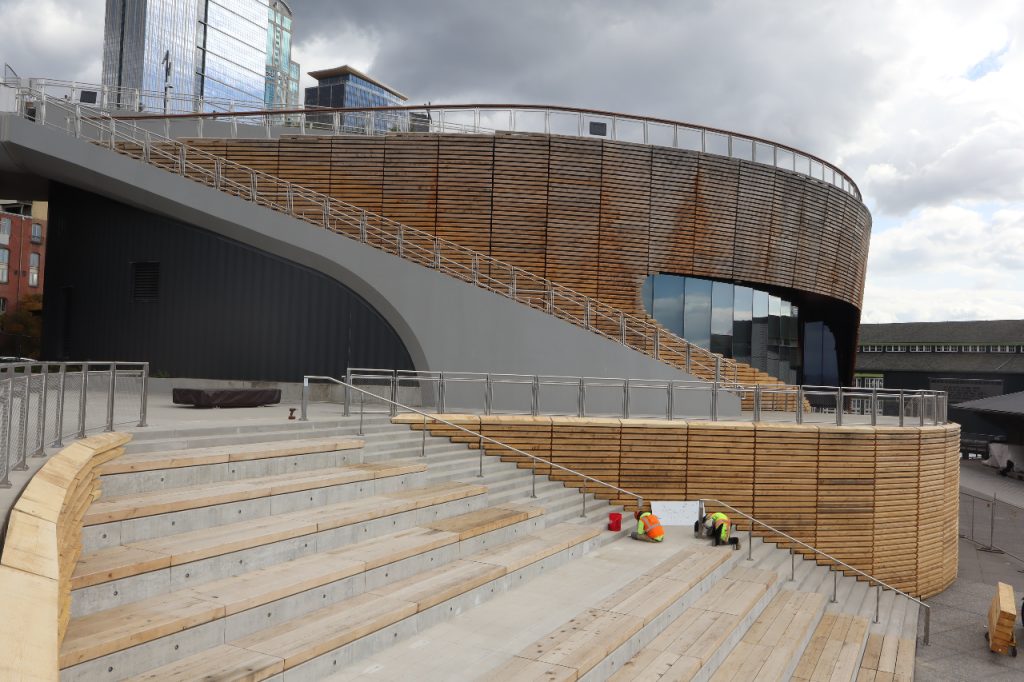
The idea of creating an overpass under the Market has been part of the waterfront plan since the very beginning. Early plans from 2012 included more covered walkways and more brand new buildings tucked into the overpass structure. A later iteration showed less coverings but more open grass, mirroring nearby Victor Steinbrueck Park.
“It was built into the DNA of the proposal from day one — so much of what we learned through that [early engagement] process was that we not only wanted a great waterfront park, but we wanted these really strong connections down to the downtown and all these neighborhoods to help overcome the topography,” Marshall Foster, who previously served as the first Director of the Office of the Waterfront and now serves as Director of Seattle Center, told The Urbanist.
It was the integration of the Seattle Aquarium’s new building into the structure fundamentally changed the design. Initially, the aquarium had been planning to build a new build directly in Elliott Bay, a plan that didn’t pan out.
“Ultimately, we made a collective decision that the smarter move was to make space at the foot of this building for that pavilion, instead of having it in water, which created all kinds of complexity for them and for us,” Foster said.
The final design ultimately uses the height of the new aquarium building to get visitors over the height of the existing aquarium and other piers to provide the sweeping views that Seattleites will be able to experience starting Friday.
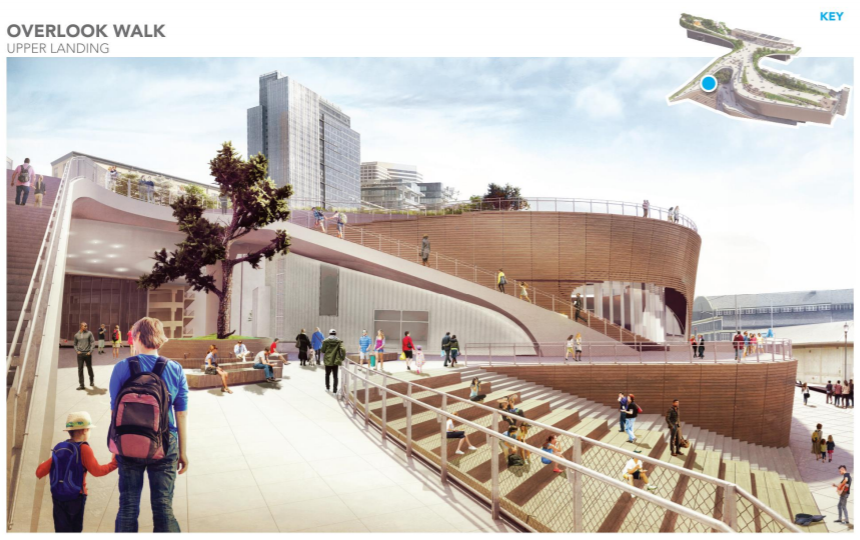
Other elements of the design didn’t end up dovetailing as nicely with the aquarium. The close proximity of the aquarium, which requires extensive underground support systems, ended up crowding out a large tree that had been planned as a focal point between the twin curved staircases. In place of the tree, the City has commissioned a large woven basket sculpture that is still under assembly and yet to be installed.
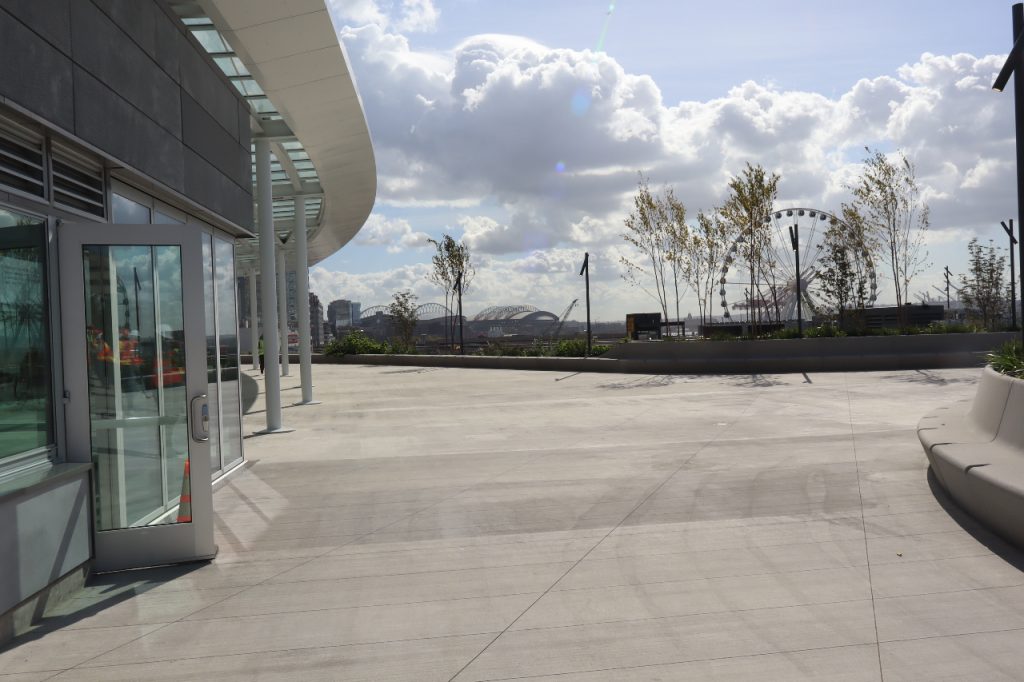
While many people have mixed feelings about the overall waterfront redevelopment, especially the new Elliott Way roadway up into Belltown and the incredibly wide section of Alaskan Way near Colman Dock, the Overlook Walk represents its high point, in more ways than one, and is poised to become one of the city’s most iconic new spaces.
Friday’s grand opening festivities will run from 4:30pm to 7pm, with live music hosted by KNKX’s DJ Abe Beeson and live music performances from buskers, such as Travelin’ Miles, Bob Goldstick, and Carly Ann Calbero. The event will also include food trucks and entertainment, including stilt walkers and lawn games.
Ryan Packer has been writing for The Urbanist since 2015, and currently reports full-time as Contributing Editor. Their beats are transportation, land use, public space, traffic safety, and obscure community meetings. Packer has also reported for other regional outlets including BikePortland, Seattle Met, and PubliCola. They live in the Capitol Hill neighborhood of Seattle.

